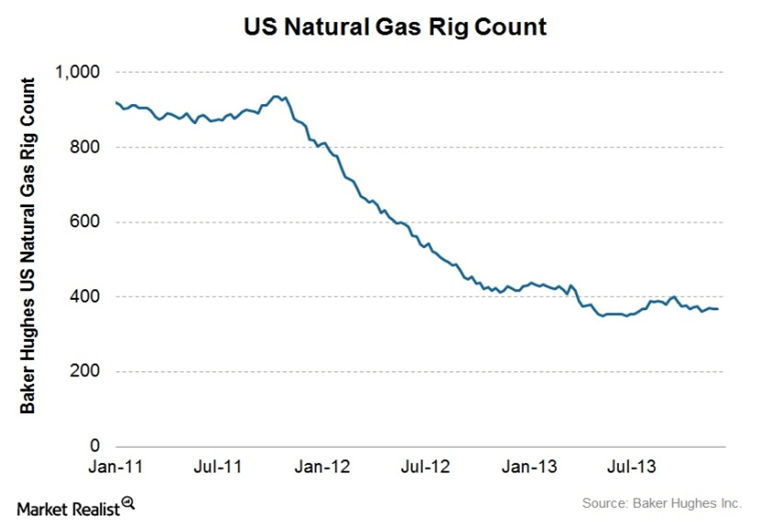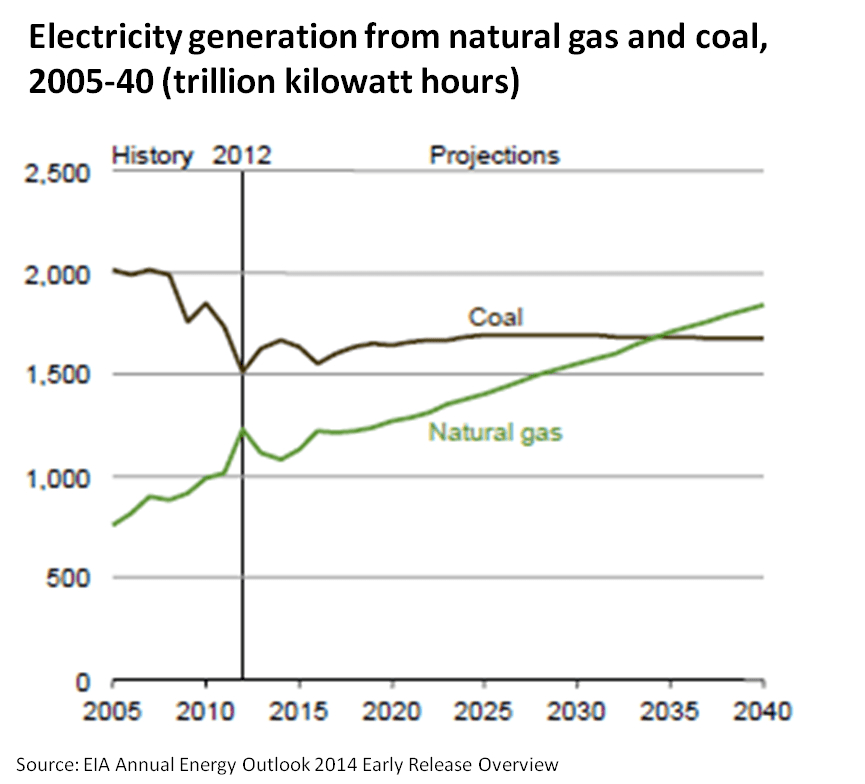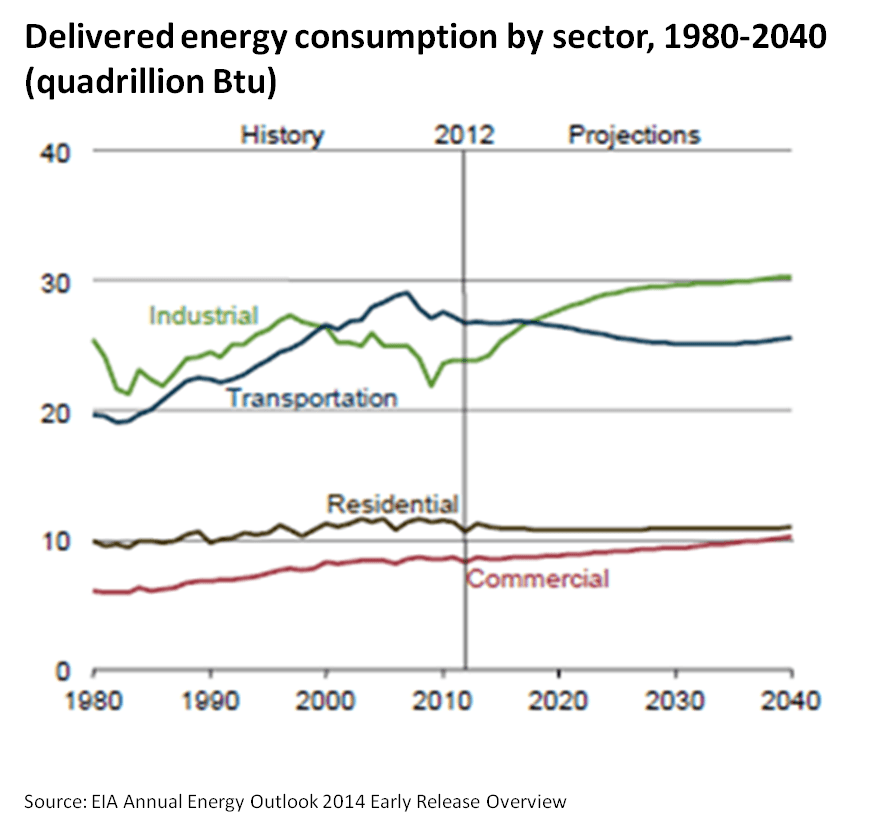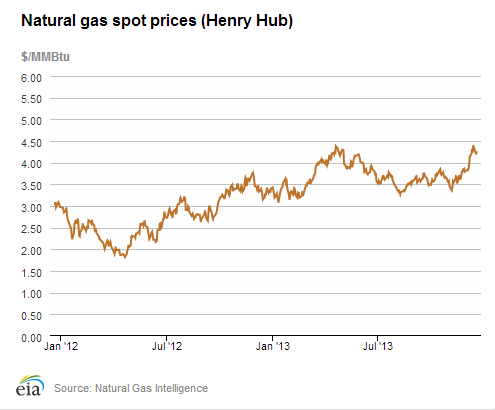Market Data

December 22, 2013
Natural Gas Prices Rise on Tight Supply
Written by Sandy Williams
Natural gas future prices rose 5 percent on news from the Energy Information Administration that gas supplies fell by 285 billion cubic feet in the week ended Dec. 13. Freezing temperatures around the nation drove demand for natural gas to heat homes and businesses, creating the largest draw on gas supply in a single week, according to the EIA. Natural gas supply is currently 7.5 percent below the five year average. A rise in natural gas prices could help the steel industry which has seen a decline in new rigs since 2011.
Frigid temperatures in the Midwest and elsewhere also slowed gas production, reducing supply further, as producers experienced “freeze-offs” where water in the wells freezes disrupting gas flow.
Higher prices are welcome news for natural gas producers and suppliers. For the week ended December 13, January delivery prices rose 20.7 cents to $4.45 per million British thermal units–the highest price since July 2011. But by the EIA’s weekly update on Dec. 18, January delivery prices on the New York Mercantile Exchange declined to $4.25/MMBtu.
The natural gas rig count has been holding between 360 and 380 in the past few months according to data from Baker Hughes. For the week ending Dec. 13 rigs decreased from 375 to 369. The relatively low price of natural gas has held back new drilling with rig counts falling or holding flat as a result. For example, Nucor announced an agreement with Encana Corp to temporarily suspend drilling of new wells because of weak prices. Nucor is counting on its joint venture with Encana to supply natural gas to its new DRI plant in Louisiana as well as its other facilities in the U.S. The venture with Encana has already generated 60 percent more natural gas than previously anticipated and Nucor will be able to continue receiving low cost natural gas for its plants.
Lack of price stimulus to drill wells is not the only reason natural gas rig counts are falling. Producers have become highly efficient in drilling shale wells. Bigger wells are drilled in half the time and extend further than older wells, boosting natural gas production. Drilling improvements allow multiple wells to be drilled from a single location, saving time and money on rig leasing. Drilling distance of around 1200 feet per day has almost doubled from last year.

The EIA, in its 2014 Annual Energy Outlook preview, says that the natural gas boom is not going away. Natural gas production by the year 2040 is expected to increase 56 percent over 2012 levels to 37.45 trillion cubic feet (TCf) per year. Shale gas production is expected to double and account for 53 percent of all produced volumes.
Industrial gas consumption is expected to rise 2.5 trillion cubic feet by 2040. Electric generation by natural gas is projected to increase by 2.0 TcF in the same period. By 2040 EIA projects natural gas will overtake coal for generation of electrical power with: natural gas supply 35 percent of electrical power versus coal at 32 percent.

The anticipated surge in gas production should be accompanied by increased demand for OCTG steel products, including pipes and storage tanks. Worthington Steel recently launched production of cryogenic (stainless) tanks used for the storage and transportation of liquefied natural gas (LNG) to compete in what is projected as a $1 billion market. Rig operations use approximately 300 tons of OCTG per month and there are over 300,000 miles of natural gas pipeline already in the U.S. with more to come.








